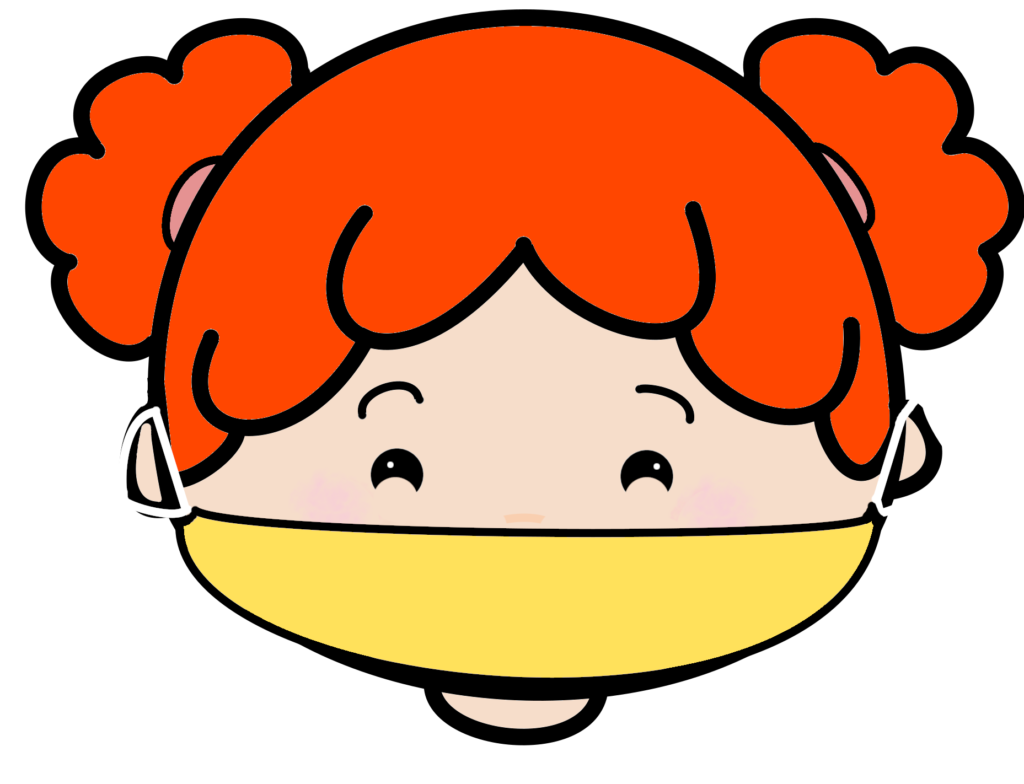
Childcare centers are now required to have children ages 4 and up wear masks in community spaces in Michigan. Children ages 2 and up are strongly encouraged to wear a mask in confined classrooms. This seems like a daunting task. I attended a training with a pediatric ER doctor, a behavioral pediatrician, a child psychologist, and the director of licensing. These individuals provided support, ideas, and scientific evidence to support children wearing masks.
Children are resilient. We see this all the time in the classroom. Things that would cause adults to fret for days, pass by children as a fleeting moment. Children also are capable. Children are able to comply with safety rules from infancy. Between the ages of 2 and 7 children are in the preoperational stage. At this point, children are egocentric. Children are able to think symbolically. When taking these two facts into consideration, the best way to approach mask wearing with children is to focus on how the child’s actions are helping others. The child focuses on the actions they can do while also making the connection of the mask and safety. Children in this stage are also beginning to attach meaning to objects with language. Use simple, child-friendly explanations for mask wearing.
Children need grace. Wearing a mask all day is not going to be an easy task for children. Children lack impulse control. Their pre-frontal cortex is just beginning to fire. This area of the brain regulates self-control. You may find children frequently touching their face or removing their mask. Help children understand cognitively the importance of the mask, redirect and guide when needed, and celebrate the behavioral success when the mask is worn. Children thrive on mastery. Becoming an accomplished mask wearer is an opportunity for a child to experience growth and success. Do not expect perfection.
As children are introduced to wearing masks, provide support. Here are some suggestions to implement in the classroom:
- Provide doll sized masks for children to play with.
- Have the children decorate and personalize a mask.
- Allow children opportunities to play games involving masks.
- Adults should be wearing masks with pride.
- Allow mask breaks (this may be while eating or outside).
The following are suggestions a caregiver can offer for a parent:
- Provide multiple masks each day.
- Masks need to clean each day.
- Have your child choose a mask. Make the mask fun and something that appeals to the child.
- The following link contains information and videos for children sesamestreet.org/caring
- Reusable masks are more cost efficient and produce less waste.
- Parents can encourage children to wear a mask through out the day at home.
Children are hard wired for social skills. Even though a mask with cover the bottom portion of the face, children will be able to decipher emotions through other means. Children use tone of voice, eye movements, eyebrow shapes, and sounds being made to determine what a person may be feeling. Offering children practice with this may be helpful. I have created a PowerPoint activity that may be used virtually or printed. Children are tasked with determining how the masked children are feeling. This activity may be downloaded for a very low fee at the following link: https://www.teacherspayteachers.com/Product/Masked-But-Still-Feeling-5930676
I have also created an emotion match game, empowering posters, and a mask that may be decorated. These are available for FREE at the following links:
- Emotion Match Cards https://www.teacherspayteachers.com/Product/Emotion-Mask-Match-5930703
- Empowering Posters https://www.teacherspayteachers.com/Product/Empowering-Mask-Posters-5930711
- Mask Printable https://www.teacherspayteachers.com/Product/My-Helper-Mask-Printable-5930733
If you download these items, please leave feedback! I greatly appreciate it!
Literature is often a great starting point for discussions with children. Here are children’s books available from Amazon affiliate links.
- Lucy’s Mask
- Let’s Talk About Masks: A Children’s Book and Conversation Starter for Parents
- Billie and the Brilliant Bubble: Social Distancing for Children
- A Unique Start From 6 Feet Apart: A Book About Returning to the Classroom During a Pandemic
- Why Did the Whole World Stop?: Talking With Kids About COVID-19
- The Day the Lines Changed: An Inspiring Story about a Line, a Pandemic, and How Change Shapes us All
- Kelly Goes Back to School: More Science on Coronavirus
- The Love Behind the Mask
Another idea is to use non-washable markers to color a mask for the children to wear for the day. This would be an expense, but may help children take ownership of the mask. These are single use masks, and should not be worn for multiple days. This may be something you can suggest to parents to do at home to have a new mask for each day.
I hope these tips and activities help mask wearing with children seem a little less daunting. The best quality early childhood educators have is to be adaptive. We think fast on our feet in all situations. Mask wearing is a new situation, but we will all succeed!
